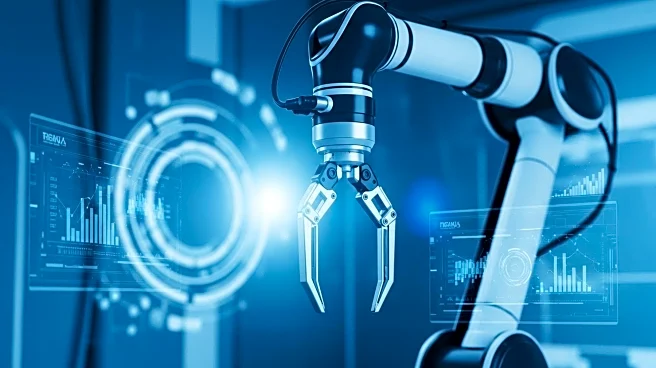What's Happening?
The global agricultural robots market is anticipated to grow significantly, with projections indicating an increase from USD 15.67 billion in 2024 to approximately USD 88.15 billion by 2032. This growth, at a compound annual growth rate (CAGR) of 24.1%, is driven by the rising demand for automation in farming operations across North America, Europe, and Asia. Key applications include field farming and harvest management, utilizing robotic solutions for seeding, harvesting, soil, and irrigation management. North America currently holds the largest market share, while Asia Pacific is expected to exhibit robust growth due to increasing agricultural mechanization and investments in agri-tech.
Why It's Important?
The expansion of the agricultural robots market is crucial as it addresses labor shortages and rising farm wages, enhancing productivity and food security. Automation in agriculture, coupled with the integration of AI, IoT, and 5G, is creating smarter, autonomous systems that improve efficiency and reduce resource wastage. This shift is particularly significant for mid- and small-scale farms, which can benefit from scalable robotic solutions. The market's growth also reflects broader trends in precision agriculture, which is increasingly reliant on data analytics for predictive decision-making.
What's Next?
The market is expected to continue expanding as farms increasingly adopt automation to offset labor constraints. Challenges such as high capital expenditure, limited infrastructure in rural areas, and technology acceptance among smallholder farmers need to be addressed. Solutions may include financing models like robotics as a service, government incentives, and training programs. Major players are investing in R&D and strategic partnerships to capture market share, with competition intensifying through AI-driven autonomy and modular design.
Beyond the Headlines
The adoption of agricultural robots represents a transformative shift in modern farming, with implications for sustainable farming practices and regulatory support for precision agriculture. As the market evolves, mergers, acquisitions, and alliances are expected to further shape its structure, with firms differentiating through integrated digital platforms and after-sales services.











